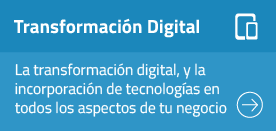Process Management Life Cycle: Steps for implementing a process-based organization
In the previous post we have described some benefits for running companies following processes (instead of just the traditional functional areas). Now the logical next question is: ¿which steps should the business follow in order to implement and manage those processes?
There are several approaches that can be found in the literature for achieving this. However the differences among these are not significant. Most of these approaches agree on starting with a strategic planning phase, then build processes (modelling), implement them with IT support and finally measure their results for further improvements. As an example, the following steps have been taken from the Process Management Life Cycle developed by the Austrian company BOC(Bayer, Franz; Kühn, Harald, «Process Management for Experts», year 2013, ISBN 9783642369957):
- Process Strategy: the main processes are mapped out based on the strategic goals of the business. At this point there is a differentiation between core processes (directly involved on the generation and delivery of the main products or services), and supporting processes (which are needed for optimizing the core ones, like human resources, IT-management, finances, etc.).
- Process Documentation: each process is subdivided into several sub-processes and activities that explain in a detailed way the tasks to be done by the personnel and/or machines. By using different modelling tools, the result of this stage is the documentation of the current processes available to the parties involved.
- Process Optimization: the documented processes are analyzed and improvements are detected. For example, it can be noticed that a particular process can be done faster and at low cost, if new software is installed or if the activity is done in a different way.
- Process Implementation: processes that have been improved are to be inserted in the organization. This includes the installing of infrastructure, as well as preparing the personnel for the changes (teaching them the new ways how the work will be done).
- Process Execution: the improved processes are now part of the daily work and the organization runs its operations in a better way. The organization is more competitive!
- Process Controlling: based on performance indicators established in the strategic phase, the results obtained from the improved processes are measured in order to confirm if it really worked out or to detect further improvements (for example: the customer satisfaction may be measured for confirming if it was improved thanks to the modified process).
The following graphic shows these 6 steps; whereas it follows a continuous improvement approach (better processes can be substituted again in the future for even better ones thanks to new technologies, methodologies or cultural changes in the organization, among others).

Source: Book “Process Management for Experts”, year 2013, Page 13
Since any process management life cycle requires a good expertise in methodologies and high investment on IT-support, sometimes organizations prioritize the documentation and controlling stages in the short term, in order to gather momentum (they follow steps 1, 2 and then directly to 6). The implementation of processes can mean a high investment for organizations, but the current tendencies are demonstrating that it pays back. And even in just 2 to 3 years.
Written by: Piero Ponce














